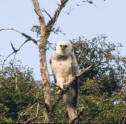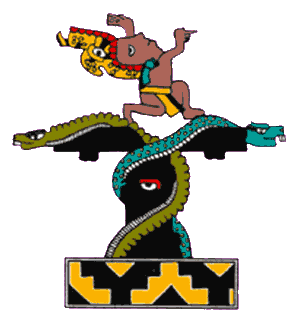

► Research
Research - Jamie Rotenberg
______________________________________________________________
My primary research interest is tropical avian ecology, using birds as environmental indicators of habitat change and condition. My secondary area of interest includes the breeding and population status of single-species, neotropical migratory birds of conservation concern in coastal North Carolina and coastal and inland South Carolina, in particular, how we may raise their populations to healthy and sustainable levels through monitoring, research and community outreach education.
______________________________________________________________
Current Projects:
Please place cursor over image and click for more information.
Harpy Eagle Belize Project
__________________________________________________________________________________
The Painted Bunting Observer Team Project
The eastern population of Painted Bunting (Passerina ciris) is in dec
line. The main goal of this project focuses on developing strategies for sustaining eastern Painted Bunting populations, with volunteers playing a major role in monitoring and collecting data in the field to meet that goal.
State comprehensive wildlife conservation strategies have emphasized a need for multi-scale avian monitoring programs (i.e., North Carolina and South Carolina), as well as national (Photo by Mark Jones)
efforts (e.g., North American Bird Conservation Initiative). A key issue for monitoring programs is that they must be designed and implemented so that the result assesses changes in populations and habitats over time as well as detect species-specific trends of distribution and population size. These data then guide future management and/or conservation strategies. Because it is not always economically or logistically feasible for state and federal wildlife agencies to directly carry out all monitoring identified, some monitoring may be best accomplished by employing citizen science models.
Avian citizen science projects can successfully carry out research and/or monitoring programs that are otherwise impossible to carry out by employing field technicians. Reliability of volunteer observations is high, with quality datasets used in many peer-reviewed publications. Using a citizen science approach, we initiated the Painted Bunting Observer Team Project, studying the eastern population of Painted Bunting in North and South Carolina.
Breeding Bird Survey data shows that eastern Painted Buntings have declined at least 3.2% annually over a 30 year period, possibly due to increased coastal development and agricultural practices, both of which reduce the shrub-scrub brush vital to breeding Painted Buntings. Since Painted Buntings readily visit backyard bird feeders, citizen scientists can readily participate in a variety of data generating components that aid us in comparing subpopulations breeding in suburban, rural and natural habitats. Along with backyard banding, these data can include quantifying demographic parameters such as population distribution, density and abundance; productivity and adult survival; and, behavioral patterns of site-fidelity and habitat use.
For more information on the Painted Bunting Observer Team (PBOT) Project, please contact me directly via email at rotenbergj@uncw.edu, and/or visit the project website at www.paintedbuntings.org.
For Students: Each year I recruit several undergraduate students as interns on the project. Please contact me if you are interested.
______________________________________________________________
The An Integrated Community-Based Harpy Eagle and Avian Conservation Program for the Maya Mountains Massif
Historically, research and monitoring of species of flora and f
auna in the protected areas of the Maya Mountains Massif (MMM) of Belize have been conducted primarily by foreign scientists. These studies have had little to no direct benefits to the local community members in the buffer zone communities that border these areas. What little benefits that have been received, have been temporary, such as salaries for jobs such as porters or cooks. These short term benefits, although helpful, have had little long term impact on the local populationís appreciation of the protected areas themselves, and have not created a society of advocates and supporters of the MMM. This disconnect between hard science and the local society creates an adversarial condition, with locals perceiving science as a benefit for foreign academics, and the protected areas (Photo by Steven Brewer)themselves as partially set aside for use by educated non-Belizeans, who do not contribute on a measurable scale to the economic development of the local economies. This is particularly true in protected areas such as the Bladen Nature Reserve, where its strict category of protection prevent even tourism as a means of alternative livelihoods for locals such as tour guiding and providing other services.
Our goal is to build capacity for avian conservation in the Maya Mountains by enhancing the links between protected areas and their surrounding communities. Project objectives include surveys and monitoring of rare Harpy Eagles (Harpia harpyja), other raptors, and the bird community supported by the Reserve, providing base-line data; a community- based alternative livelihood strengthening program for the development of a core group of Avian technicians from buffer zone communities providing them the tools for acquisition of science based skills in the use of GPS, bird identification, scientific methodology and data collection; and an environmental awareness and education program. The project is supported by the Nature Conservancy Belize Program.
For more information please visit the Nature Conservancy website: http://www.nature.org/wherewework/centralamerica/belize/news/news2398.html.
and/or the Belize Foundation for Research and Environmental Education (BFREE) website: http://www.bfreebz.org.
For Students: We are now accepting applications for undergraduate student internships for Belize. Also, this fall, we will be initiating our new Masters Program in Environmental Studies and I will be taking applications for qualified students interested in an independent research project in Belize. Please contact me directly.
______________________________________________________________
Links
click logo to link to websites
BFREE


